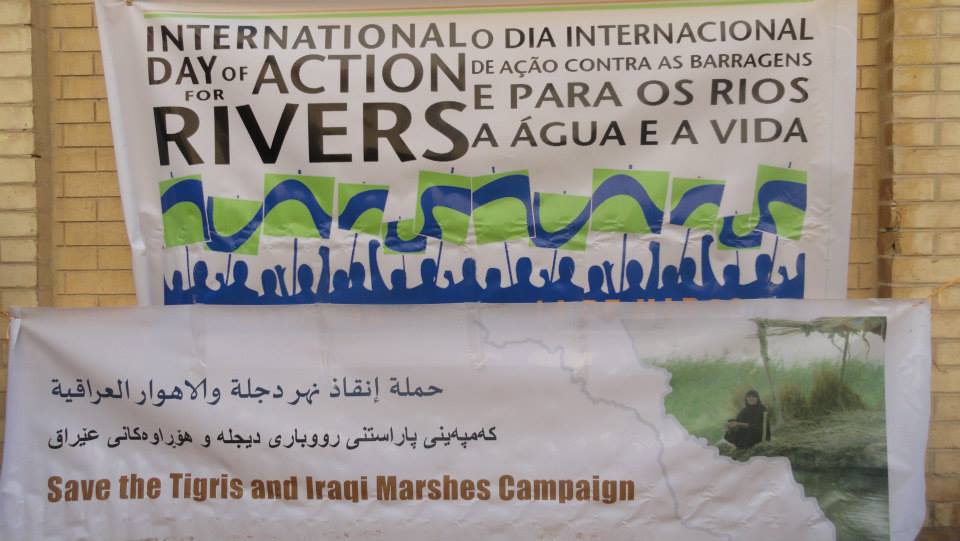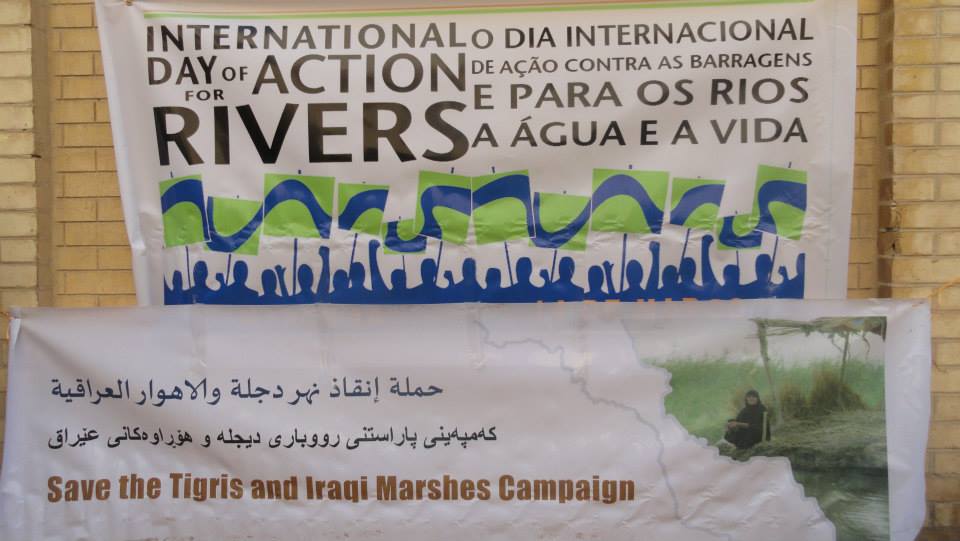On this day in the US, some people celebrate Saint Valentine with gifts of red roses, heart-shaped chocolate and romantic dinners. Whether or not we participate (my rose bush won’t flower for another four months), Valentine’s Day provides an excuse to reflect on a more universal topic: Love.
For those of us on the front lines defending the flow of rivers and resisting the rapacious industrial growth society – and the mega-hydro agenda that increasingly propels it – we might not think of “love” as a helpful or appropriate focal point. Yet, I feel it’s crucial to our success as a movement – one that seeks to safeguard a living planet where the water cycle still flows – that we continually find replenishment for our hearts and that we remain ever-present to the flow of love, for the sake of rivers.
In the past week, I’ve come across three quotations that resonated for me, – and a couple of examples from river movements – that are emboldening me to fill my final blog post at International Rivers with, well, love.
The first comes from the iconic, militant doctor-turned-revolutionary, Ernesto ‘Che’ Guevara, who famously stated, “at the risk of sounding ridiculous, let me say that the true revolutionary is guided by great feelings of love.”
The next comes from America’s most venerated social movement organizer, Dr. Martin Luther King Jr., a practitioner who advanced Gandhi’s strategies of non-violent resistance: “Hatred cannot drive out hate. Only love can do that.” These sentiments were expressed by Dr. King in the face of a powerful government using racist laws and state-sponsored violence as instruments of systematic oppression.
And the third, unattributed quote – likely building from Dr. King’s sentiments – which I read yesterday on a hand-written poster on the wall of my daughter’s school (which operates as a parent-teacher collective founded by California-based pacifist-anarchists over 55 years ago): “Love is the only force that can turn an enemy into a friend.”
OK. Resonant sentiments in the abstract, perhaps. But what value, we may ask, do such platitudes hold for the families of river defenders in Latin America who are mourning their loved ones recently killed for conducting a sacred water ceremony, or marching peacefully to the field office of a foreign dam-construction company? Or for the hundreds of thousands of desert-dwelling peoples of Lake Turkana in East Africa, who know that they will spend the next three years watching the source of their livelihoods and culture dry up as a newly constructed dam upstream begins to fill and send that water to massive sugar and cotton plantations?
Being “guided by great feelings of love” is a tall order, perhaps an unrealistic and privileged request in a world embroiled in so much chaos and conflict. Yet, whenever I plumb the depths of my analysis of the “world as it is,” or dialogue about the “solutions” to the root drivers of the economic and governance systems that are so starkly failing people and the planet, I see rivers as a solution. I feel love as a solution. And it’s flow that makes them both alive and real. When I’m really living presently in the moment, beside a river, I cannot distinguish between love and river – they become one and the same.
And I know I’m not alone. In the few honored years I’ve been with International Rivers, I’ve met numerous people – we sometimes label them “activists” – on the frontlines defending their mother lands and mother waters from destructive dams, whose courage, resolve – even anger – is generated by “great feelings of love.” And so are the solutions they offer.
 In Baghdad, the Save the Tigris Campaign hosted a Day of Action for Rivers event. The event informed citizens about the threat posed by the Ilisu dam, and called for their support.
In Baghdad, the Save the Tigris Campaign hosted a Day of Action for Rivers event. The event informed citizens about the threat posed by the Ilisu dam, and called for their support.
I draw upon an example from Mesopotamia – where today’s headlines define the place almost entirely by lines of conflict (e.g. “Kurdish autonomous zone”; “Islamic State-controlled”; “the fluid borders of Syria”). But there’s another story people are crafting for the Tigris River; a call for cooperation rather than conflict. River protection movements in that region may have been catalyzed by opposition to a particularly destructive dam (such as Ilisu in Turkey), and may be operating within an almost unimaginable context of conflict, yet it’s the river itself, or something like love, that brings Marsh Arabs from Basra together with Kurdish people in eastern Turkey to ask questions their governments refuse to put on the agenda: how can this Tigris River be shared, across boundaries, in support of river-dependent peoples and livelihoods? Dams are instruments of division, whereas rivers unite us. These were the kinds of questions and perspectives posed last year in Iraq, which for the first time organized an event for the March 14 International Day of Action for Rivers.
I’m drawn also to an emerging story on the Nile, where saber-rattling by the governments puts conflict over the Nile’s waters into international headlines. But for some people of the Nile, the force of the river draws them together more than the divisiveness of artificial national boundaries. Musicians and artists from Egypt to Ethiopia have come together under the banner of The Nile Project producing music and events to advance a vision for a truly shared river that is driven, it appears, by the universal language of love turning “enemies” into friends. (And if you live near the mouth of California’s great river system, known as the San Francisco Bay, you can experience this yourself as The Nile Project is performing at Stanford on February 18 and UC Berkeley on February 19.)
And finally, I’m drawn to indigenous communities in Patagonia, and throughout South America, who resist destructive dams out of a duty, but are really organizing for something much more revolutionary: an off-ramp from this industrial growth society that benefits few while plundering the future, and into a whole different way of being, exchanging and living: Buen Vivir, a complex worldview that’s been summarized as “a way of life and form of development that sees social, cultural, environmental and economic issues working together in balance, rather than separately or hierarchically.” (Guardian, Feb 4, 2013) China recently penned an investment deal to assist Argentina in damming rivers of Patagonia, but meanwhile indigenous women are marching and organizing to realize their vision of Buen Vivir.
Destroying rivers destroys the pulse of universal life, and blocks the flow of love. Without that, we lose our humanity – and we risk losing everything.
Wherever you are in the world, in one month you can raise your voice, pump your fist, and elevate your heart by joining the International Day of Action for Rivers. Each year we catalogue hundreds of actions in nearly 50 countries – join with a group, or organize your own! It’s easy to participate and you can find more information here.
And while #RiversInOurHands is an organizing phrase for this year’s International Day of Action for Rivers, let’s also keep rivers in our hearts – that’s a solution that keeps on flowing.


